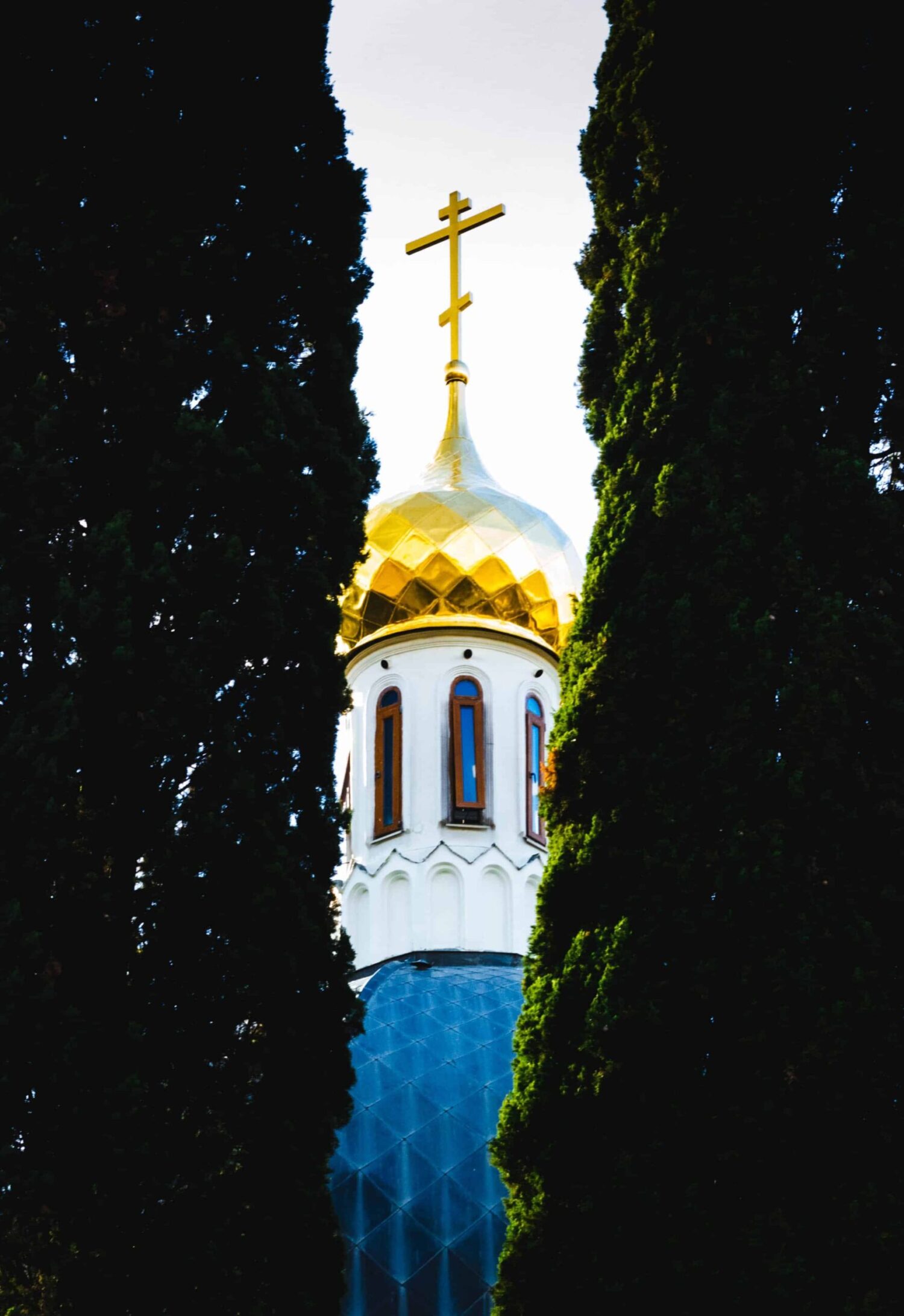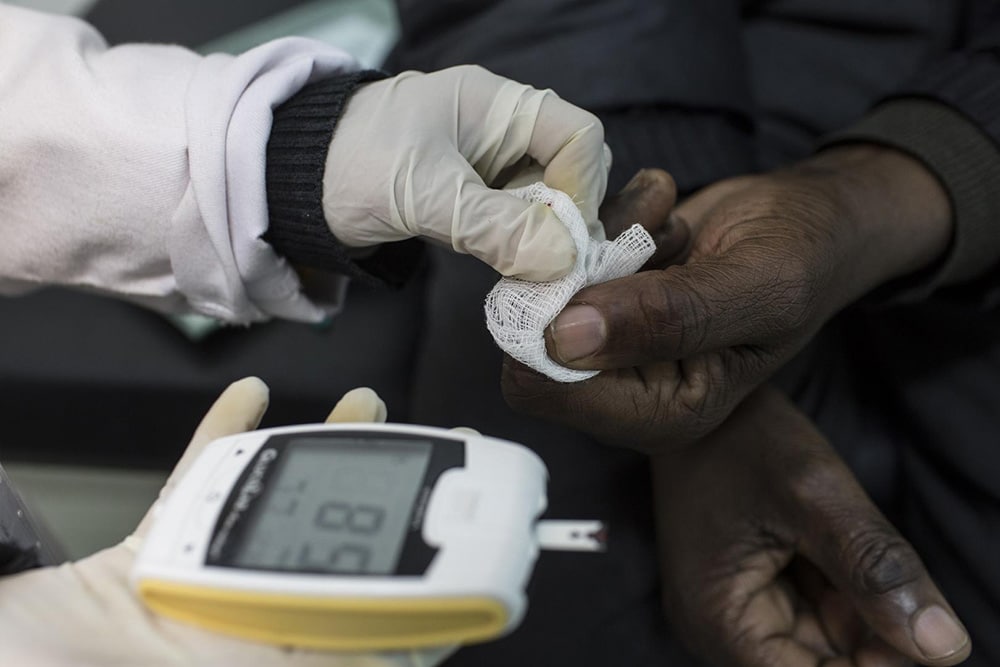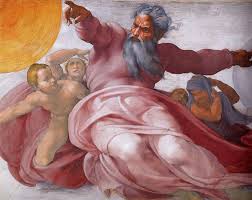“God is love” (1 John 4:8)
Like being hidden. Do you see and save everything? How, we are not visible. Do you see us all? But You, my God, do not know all whom You see, but in loving You know only those who love You, and only to them You show Yourself. Being the Sun hidden to every mortal nature. You ascend in Your servants, we see being them, and they rise in You, who were previously darkened: fornicators, adulterers, libertines, sinners, tax collectors. Through repentance they become sons of Your Divine Light. After all, Light, of course, gives birth to light, therefore they also become light, children of God, as it is written (Ps. 81, 6), and gods by grace, those who renounce the vain and deceitful world, hate their parents and brothers without hatred, considering themselves as wanderers and strangers in life; those who will deprive themselves of riches and possessions, completely rejecting addiction to them; those who, for the sake of heavenly glory, from their souls abhor empty glory and human praises; those who cut off their will and became for the shepherds, as it were, harmless sheep; those who became dead in body to every evil deed, toiling to sweat on the cultivation of virtues and being guided in life by the will of the helmsman alone, dying through obedience and resurrecting again; those who, thanks to the fear of God and the memory of death, shed tears all day and night and cleverly fall at the feet of the Lord, asking for mercy and forgiveness of sins. Such, through every good deed, come to a good state, and, like those who daily weep and knock zealously, they attract mercy to themselves. With frequent prayers, unspoken sighs and streams of tears, they purify the soul and, seeing its purification, they perceive the fire of love and the fire of desire to see it completely purified. But since it is impossible for them to find the end of the world, their purification is endless. For no matter how much I, the pitiful one, am cleansed and enlightened, no matter how much I see the Holy Spirit purifying me, it will always seem to me that this is only the beginning of purification and vision, because in the boundless depth and in the immeasurable height, who can find the middle or the end? I know that there is a lot of Light, but I don’t know how much. Desiring more and more, I constantly sigh that I have been given little (although it seems to me a lot) in comparison with what, as I guess, is far from me, which I crave when I see and think that nothing I don’t have it, because I don’t feel the wealth given to me at all, although I see the Sun, I don’t consider it as such. In what way? – listen and believe. What I see is the Sun, Which is inexpressibly pleasant to the senses; It draws the soul to unspeakable and divine Love. The soul, seeing Him, ignites and burns with love, desiring to completely have within itself that which is it, but cannot, and therefore it is sad and no longer considers it good to see and feel Him. When the One I see and cannot be contained by anyone, as truly impregnable, deigns to have mercy on my contrite and humble soul, then as He appears to me, shining in front of my face, He becomes the same shining one in me, filling me completely, humble, with all joy, every desire and divine sweetness. This is a sudden transformation and a wonderful change, and what is happening in me is inexpressible in words. After all, if someone saw that this sun, visible to all, descended into his heart and everything settled into him, and would also shine, would he not die from a miracle and become mute, and would not all who saw this is? But if anyone sees the Creator of the sun, like a luminary, shining within himself, acting and speaking, how will he not be amazed and tremble at such a vision? How can he not love his Life-Giver? People love people like themselves when they seem to them somewhat better than others; The Creator of all, the only immortal and omnipotent, who, having seen Him, will not love? If many, believing by hearing, loved Him, and the saints even died for Him, and yet they are alive, then those who partake of the visions of Him and the Light, known by Him and knowing Him, how will they not love Him? Tell me how, for His sake, will they not weep incessantly? How will they not despise the world and what is in the world? How will those not renounce all honor and glory who, having risen above all glory and earthly honor and having loved the Lord, have found the One Who is beyond the earth and all things visible, the One Who created all things visible and invisible, and received immortal Glory, having in Is every good thing without lack? Also, every remission of sins and every desire for eternal blessings and divine things, like some kind of wealth, they drew from the same eternally living source, which give us, Lord, and all those who seek and passionately love You, so that we also with the saints Your eternal blessings have been enjoyed forever and ever. Amen (59, 41-43).
Who can, Master, tell about You?
Those who do not know You are deceived, knowing nothing at all;
Those who have known by faith Thy divinity
They are possessed by great fear and terrified with trembling,
Not knowing what to say to them about You, for You are beyond the mind,
And everything with You is inexhaustible by thought and incomprehensible:
Works and Your glory, and Your knowledge.
We know that You are God, and we see Your Light,
But what you are and what kind you are, no one knows for sure.
However, we have hope, we have faith
And we know the love that you gave us,
Boundless, inexpressible, in no way incomprehensible,
which is Light,
The Light is impregnable and does everything.
It is sometimes called Your hand, sometimes the eye,
Now with holy lips, then by Strength, then by Glory,
That is known as the most beautiful face.
He is the unsetting sun for the lofty in the knowledge of the Divine,
He is a star forever shining for those
that contain nothing more.
It is the opposite of sadness, drives away hostility
And completely destroys satanic envy.
In the beginning, He softens and, purifying, refines,
Banishes thoughts and reduces movement.
He secretly teaches to be humble
And does not allow to scatter and stagger.
On the other hand. It clearly separates from the world
And makes you forget all the sad things in life.
He nourishes and quenches thirst in various ways,
And gives strength to those who work well.
He repays irritation and sadness of the heart,
Absolutely not allowing to be angry or indignant.
When He flees, those wounded by Him chase after Him.
And with great love from the heart they seek Him.
When He returns, appears, and shines forth lovingly,
It encourages those who pursue to turn away from Him and humble themselves.
And, being repeatedly sought, it encourages to move away from fear
How unworthy of such a good, surpassing every creature.
O inexpressible and incomprehensible Gift!
For what does He not do and what does not happen!
He is delight and joy, meekness and peace,
Mercy is boundless, the abyss of philanthropy.
He is seen invisibly, fits out of place
And it is contained in my mind inviolably and intangibly.
Having Him, I do not contemplate, but contemplating until He is gone,
I strive to quickly grab Him, but He flies away.
Perplexed and inflamed, I learn to ask
And seek Him with weeping and great humility
And don’t think that the supernatural is possible
For my strength or human effort,
But—for the goodness of God and boundless mercy.
Appearing for a short time and hiding. He
One by one, he expels passions from the heart.
For man cannot conquer passion,
If He does not come to the rescue;
And again, not everything immediately expels,
For it is impossible to perceive the whole Spirit at once
A man of the soul and become impassive.
But when he has done all he can:
Non-acquisition, impartiality, removal from one’s own,
Cutting off the will and renunciation of the world,
Patience of temptations, prayer and crying,
Poverty and humility, as far as he has the strength,
Then for a short time, as it were, the subtlest and smallest Light,
Surprisingly surrounding his mind, he will enthrall him into a frenzy,
But, so that he does not die, he will soon leave him
With such great speed, no matter what you think,
It is impossible for one who sees to remember the beauty of the Light,
Lest he, being a child, taste the food of perfect men
And immediately he was not dissolved or harmed by throwing up her.
So, since then, the Light guides, strengthens and instructs;
When we need Him
He shows up and runs away;
Not when we wish, for this is the work of the perfect,
But when we are in difficulty and completely powerless,
He comes to the rescue, rising from afar,
And makes me feel in my heart
Struck, breathless, I want to hold Him.
But all around is night. With empty and pitiful hands,
Forgetting everything, I sit and cry
Not hoping another time to see Him in the same way.
When, after crying enough, I want to stop,
Then He, coming, mysteriously touches my crown,
I burst into tears, not knowing who it is;
And then He illuminates my mind with the sweetest Light.
When will I know. Who is it. He immediately flies
Leaving in me the fire of divine love for Himself,
Which does not allow you to laugh or look at people,
Nor accept desire for anything seen.
Little by little, through patience, it flares up and swells,
Becoming a great flame reaching to Heaven.
It is quenched by relaxation and entertainment with household chores,
For in the beginning there is also concern for worldly things;
Returns silence and hatred to all glory
Wandering the earth and trampling oneself like dung,
For in this He delights, and then delights to be present,
By teaching this almighty humility.
So when I get it and become humble,
Then He is inseparable from me:
Talks to me, enlightens me,
Looks at me, and I look at Him.
He is in my heart and is in Heaven.
He explains the Scriptures to me and increases in me knowledge,
He teaches me mysteries which I cannot utter.
He shows how He took me from the world,
And he commands me to be merciful to all who are in the world.
So the walls hold me and the body holds me
But I am truly, no doubt, outside of them.
I don’t feel sounds and I don’t hear voices.
I am not afraid of death, for I have surpassed it too.
I don’t know what sorrow is, although everyone makes me sad.
Pleasures are bitter for me, all passions flee from me
And I constantly see the Light night and day,
Day is night for me and night is day.
I don’t even want to sleep, because this is a loss for me.
When all sorts of troubles surround me
And, it would seem, they will be overthrown and overcome me;
Then I, suddenly finding myself with the Light beyond everything
Joyful and sad, and worldly pleasures,
I enjoy inexpressible and divine joy,
I rejoice in His beauty, I often embrace Him,
I kiss and bow with great gratitude
To those who gave me the opportunity to see what I desired,
And partake of the inexpressible Light and become light,
And his gift to join from here,
And acquire the Giver of all blessings,
And to be not deprived of spiritual gifts.
Who attracted and guided me to these blessings?
Who brought me up from the depths of worldly delusion?
Who separated me from my father and brethren, friends
And relatives, pleasures and joys of the world?
Who showed me the way of repentance and crying,
By which I found a day without end?
It was an angel, not a man, * However, such a man,
Who laughs at the world and tramples the dragon,
whose presence the demons tremble.
As I tell you, brother, what I saw in Egypt,
About the signs and wonders he performed?
I’ll tell you one thing for now, because I can’t tell you everything.
He came down and found me a slave and a stranger in Egypt.
Come here, my child, he said, I will lead you to God.
And out of great disbelief I answered him:
What sign will you show me to assure me
That you yourself can free me from Egypt
And steal from the hands of the flattering pharaoh,
So that by following you, I would not be in even more danger?
Kindle, he said, a great fire, so that I may enter the middle,
And if I do not remain unscorched, then do not follow me.
These words struck me. I did what was ordered.
A flame was kindled, and he himself stood in the middle.
Safe and sound, he invited me too.
I fear, sir, I said, for I am a sinner.
Coming out of the fire, he came up to me and kissed me.
Why are you afraid, he said to me, why are you timid and trembling?
Great and terrible is this miracle? — you will see more than this.
I am terrified, sir, I said, and I dare not approach you,
Not wanting to be bolder than fire,
For I see that you are a man superior to man,
And I do not dare to look at you, of whom the fire is ashamed.
He pulled me closer and hugged me
And kissed me again with a holy kiss,
Himself fragrant all the fragrance of immortality.
After that I believed and lovingly followed him,
Wishing to become a slave to him alone.
Pharaoh held me in his power. and his terrible assistants
Forced me to take care of bricks and straw
I alone could not escape, because I did not have a weapon.
Moses ** begged God to help
Christ strikes Egypt with tenfold plagues.
But Pharaoh did not submit and did not release me.
The father prays, and God listens to him And tells His servant to take my hand,
Promising Himself to go with us;
To deliver me from Pharaoh and from the calamities of Egypt.
He put boldness into my heart
And gave me the courage not to be afraid of the pharaoh.
So did the servant of God:
Holding my hand, he walked ahead of me
And so we began to make the journey.
Give me. Lord, through the prayers of my father, understanding
And a word to tell about the wondrous works of Your hand,
which You did for me, the lost and prodigal,
By the hand of Thy servant leading me out of Egypt.
Upon learning of my departure, the king of Egypt
He neglected me as one, and did not come out himself.
But he sent slaves subject to him.
They ran and overtook me within the boundaries of Egypt,
But they all returned with nothing and broken:
They broke their swords, shook their arrows,
Their hands are weakened, acting against us,
And we were completely unscathed.
A pillar of fire burned before us, and a cloud was above us;
And we alone passed in a foreign country
Among the robbers, among the great peoples and kings.
When the king also learned about the defeat of his people,
Then he went into a rage, considering it a great dishonor
To be abused and defeated by one person.
He harnessed his chariots, raised the people
And he chased himself with great boasting.
When he came, he found me alone lying from fatigue;
Moses was awake and talking with God.
He ordered me to be bound hand and foot,
And, keeping me through the mind, they attempted to knit;
I, lying down, laughed, and armed with prayer
And with the sign of the cross, he reflected them all.
Not daring to touch or come close to me,
They, standing somewhere at a distance, thought to frighten me:
Holding fire in their hands, they threatened to burn me
They raised a loud cry and made noise.
Lest they boast that they have done something great,
They saw that I also became a light, through the prayers of my father,
And ashamed, they suddenly all left together.
Moses went out from God, and finding me bold,
Overjoyed and trembling at this wonderworking,
Asked what happened? I told him all this:
That there was a pharaoh, the king of Egypt;
Coming now with countless people,
He couldn’t tie me up; he wanted to burn me
And all those who came with him became a flame,
Emitting fire from his mouth against me;
But since they saw that I became a light, through your prayers,
Then everything turned into darkness; and now I’m alone.
Look, Moses answered me, don’t be presumptuous,
Do not look at the obvious, especially be afraid of the secret.
Hurry! let us take advantage of flight, as God commands;
And Christ will defeat the Egyptians instead of us.
Come, sir, I said, I will not be separated from you.
I will not transgress your commandments, but I will keep everything. Amen.
* Here St. Simeon speaks of his spiritual father, Simeon the Studite, or Reverent.—Note.
** That is, the spiritual father of St. Simeon, who was discussed above.—Note.
Source: Saint Simeon the New Theologian (59, 157-164). – Hymn 37. Teaching with theology about the actions of Holy Love, that is, the very Light of the Holy Spirit.
Photo by Igor Starkov:














